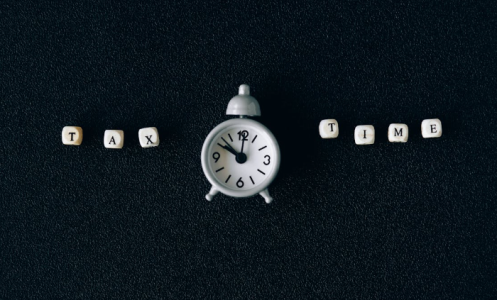Missing this deadline could cost you $1,980—but there’s still time to act!
By
Maan
- Replies 0
When it comes to your tax return, every detail counts—and even a small oversight can come with a hefty price tag.
An upcoming change to a little-known surcharge could quietly cost Aussies thousands if they’re not paying attention.
Here's what’s changing, and why now is the time to weigh up your options.
A quiet but costly tax trap was set to tighten its grip again—unless Aussies acted in time.
For the third year in a row, income thresholds for the Medicare Levy Surcharge (MLS) were set to rise, meaning some Australians could earn more without triggering the extra charge. But that didn’t mean everyone was in the clear.
In fact, financial experts warned that waiting too long to take action could result in an unexpected bill—one that stacked up daily.
From 1 July, the threshold for singles would increase from $97,000 to $101,000. For families, the change would see the limit rise from $194,000 to $202,000. While this gave some room to breathe, it also prompted a fresh wave of urgency for taxpayers hovering near those limits.
Tax Invest Accounting director Belinda Raso described the increase as ‘good news’—but not without a caveat.
‘They don’t go up every year, but they have for the past three years,’ she said.
Raso explained that the new figures meant singles could earn an extra $4,000 before being hit with the surcharge, and families had an extra $8,000 of buffer. Still, she urged Australians not to get complacent.
‘These decisions can cost or save you thousands of dollars over the next financial year. We all know private health insurance keeps going up so now is the time to start deciding what will be best for you,’ she said.
For those unfamiliar, the Medicare Levy Surcharge was not the same as the regular Medicare levy. It applied specifically to individuals and families who earned over the threshold and did not have private hospital insurance. The surcharge was calculated at between 1 and 1.5 per cent of income—on top of the standard 2 per cent Medicare levy.
But here’s the kicker: the ATO didn’t just look at your taxable income. The ‘income’ used to determine your liability included salary-sacrificed amounts, investment losses added back in, and even reportable fringe benefits—something many Australians overlooked until it was too late.
‘A lot of people don’t realise that reportable fringe benefits will get them in most cases, because they get grossed up,’ Raso said.
And once you crossed that line, there wasn’t much you could do to escape it—at least for the current financial year.
‘You’re going to be liable for the surcharge for the days that you were not covered by the private health insurance,’ she explained.
In other words, taking out a policy now wouldn’t magically erase the days you were uninsured. Raso admitted it was ‘very hard’ to dodge the surcharge once your total income hit the threshold, which was why forward planning was key.
So, what would it cost to stay clear of the MLS?
According to Finder, the average single paid $165 per month for private health insurance—just under $2,000 annually. Basic policies cost far less, averaging $78.36 per month, or about $940 per year.
But if you chose not to buy cover? That was your call, Raso said—just know what you were signing up for.
‘So you’re just paying a tax for no reason, you may as well pay for something,’ she said.
For families and couples, the surcharge didn’t just apply to the primary income earner. Everyone—including partners and dependants—had to be covered under a hospital policy for the household to avoid the charge.
The increased thresholds may have offered breathing room, but the rules weren’t going away. With 1 July fast approaching, the decision to take out private cover could make a big difference—not just to your health, but your wallet too.

With the cost of living continuing to climb, would you rather pay a little more for health cover—or risk paying a tax for nothing in return? Let us know your thoughts in the comments.
In a previous story, we looked at the biggest ATO tax return mistakes costing Aussies up to an extra $1,000—mistakes that can be all too easy to make.
For seniors keeping a close eye on their finances, avoiding these slip-ups could mean the difference between a healthy refund and a nasty surprise.
If you're sorting out your tax plans for the year, that one’s well worth a read too.
Read more: Aussies lose out on extra $1,000 with biggest ATO tax return mistakes
An upcoming change to a little-known surcharge could quietly cost Aussies thousands if they’re not paying attention.
Here's what’s changing, and why now is the time to weigh up your options.
A quiet but costly tax trap was set to tighten its grip again—unless Aussies acted in time.
For the third year in a row, income thresholds for the Medicare Levy Surcharge (MLS) were set to rise, meaning some Australians could earn more without triggering the extra charge. But that didn’t mean everyone was in the clear.
In fact, financial experts warned that waiting too long to take action could result in an unexpected bill—one that stacked up daily.
From 1 July, the threshold for singles would increase from $97,000 to $101,000. For families, the change would see the limit rise from $194,000 to $202,000. While this gave some room to breathe, it also prompted a fresh wave of urgency for taxpayers hovering near those limits.
Tax Invest Accounting director Belinda Raso described the increase as ‘good news’—but not without a caveat.
‘They don’t go up every year, but they have for the past three years,’ she said.
Raso explained that the new figures meant singles could earn an extra $4,000 before being hit with the surcharge, and families had an extra $8,000 of buffer. Still, she urged Australians not to get complacent.
‘These decisions can cost or save you thousands of dollars over the next financial year. We all know private health insurance keeps going up so now is the time to start deciding what will be best for you,’ she said.
For those unfamiliar, the Medicare Levy Surcharge was not the same as the regular Medicare levy. It applied specifically to individuals and families who earned over the threshold and did not have private hospital insurance. The surcharge was calculated at between 1 and 1.5 per cent of income—on top of the standard 2 per cent Medicare levy.
But here’s the kicker: the ATO didn’t just look at your taxable income. The ‘income’ used to determine your liability included salary-sacrificed amounts, investment losses added back in, and even reportable fringe benefits—something many Australians overlooked until it was too late.
‘A lot of people don’t realise that reportable fringe benefits will get them in most cases, because they get grossed up,’ Raso said.
And once you crossed that line, there wasn’t much you could do to escape it—at least for the current financial year.
‘You’re going to be liable for the surcharge for the days that you were not covered by the private health insurance,’ she explained.
In other words, taking out a policy now wouldn’t magically erase the days you were uninsured. Raso admitted it was ‘very hard’ to dodge the surcharge once your total income hit the threshold, which was why forward planning was key.
So, what would it cost to stay clear of the MLS?
According to Finder, the average single paid $165 per month for private health insurance—just under $2,000 annually. Basic policies cost far less, averaging $78.36 per month, or about $940 per year.
But if you chose not to buy cover? That was your call, Raso said—just know what you were signing up for.
‘So you’re just paying a tax for no reason, you may as well pay for something,’ she said.
For families and couples, the surcharge didn’t just apply to the primary income earner. Everyone—including partners and dependants—had to be covered under a hospital policy for the household to avoid the charge.
The increased thresholds may have offered breathing room, but the rules weren’t going away. With 1 July fast approaching, the decision to take out private cover could make a big difference—not just to your health, but your wallet too.
Key Takeaways
- The Medicare Levy Surcharge thresholds will rise on 1 July, allowing higher incomes before the tax kicks in.
- Singles earning over $101,000 and families over $202,000 without hospital cover will be hit with an extra tax.
- Private health insurance can help avoid the surcharge, but cover must be in place for the full year to count.
- Even if you act now, you’ll still owe the surcharge for any uninsured days this financial year.
With the cost of living continuing to climb, would you rather pay a little more for health cover—or risk paying a tax for nothing in return? Let us know your thoughts in the comments.
In a previous story, we looked at the biggest ATO tax return mistakes costing Aussies up to an extra $1,000—mistakes that can be all too easy to make.
For seniors keeping a close eye on their finances, avoiding these slip-ups could mean the difference between a healthy refund and a nasty surprise.
If you're sorting out your tax plans for the year, that one’s well worth a read too.
Read more: Aussies lose out on extra $1,000 with biggest ATO tax return mistakes








